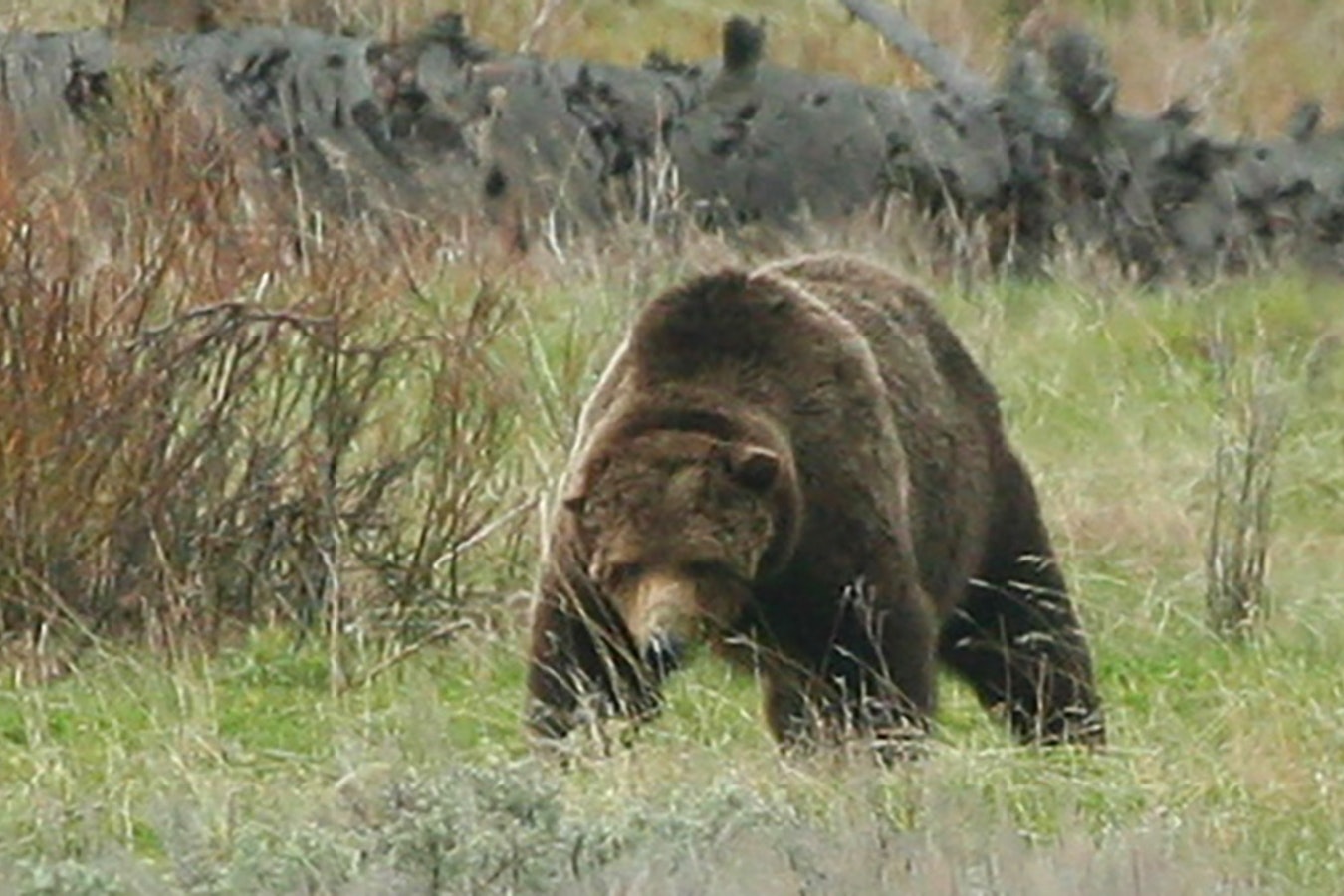Hunting wolves in Wyoming and the surrounding region has been a controversial subject, but nobody seemed to be asking the obvious: What if somebody shoots a wolf and wants to eat it?
That question, along with some related queries, was recently posed by Cowboy State Daily reader “Frank in Cheyenne.”
So, let’s find and answer for Frank.
When, Where Can I Shoot A Wolf?
Frank’s first question: “Under what conditions can I kill a wolf in Wyoming?”
The short answer is it depends upon where in Wyoming you are.
Inside our two national parks, Yellowstone and Grand Teton, all wildlife is completely protected, and hunting is prohibited. Wild critters there are strictly for the general public to enjoy and may be shot only with cameras.
In the region immediately adjacent to the parks — or about 15% of Wyoming outside the parks — wolves are in the trophy hunting management zone.
That means wolf hunting is allowed there. However, hunters must have a wolf hunting tag, issued by the Wyoming Game and Fish Department. And wolves may be hunted only during specified seasons and according to bag limits.
So, if you see a wolf in the trophy management zone, but the season is closed and/or you don’t have a wolf hunting tag, you can’t legally shoot it.
In the rest of Wyoming, or roughly 85% of the state, wolves are classified as a predatory species, like coyotes or jackrabbits. In other words, essentially varmints that can be shot on sight at any time, with no bag limit.
But bear in mind, wolves are extremely difficult to hunt. They’re intelligent, crafty and excel at avoiding humans when they need to. As even the most experienced predator hunters will tell you, a wolf hunt is about as challenging as it gets.
Can I Eat It?
Frank’s next question: “Am I then allowed to eat it?”
Another short answer: Nobody’s stopping you.
Going into more detail, wolves aren’t classified as a big game animal such as deer, elk and antelope. When you tag one of those critters, you’re legally obligated by the Wyoming Game and Fish Department to take “all edible portions” of the animal. That includes the backstraps, quarters and tenderloins. And there’s a way to do that without having to gut the animal, but that’s another topic.
With wolves, you’re under no legal obligation to keep any of the meat. And most wolf hunters simply take the pelt and leave the rest of the carcass to scavengers and microbes (nothing ever truly goes to waste in nature).
However, if you really want to take the wolf meat, that’s perfectly legal.
If It Stinks, That’s A Hard Pass
Frank’s final question: “What is the best way to prepare it?”
For this, we’ll have to defer to the experts in that field, some of the Cowboy State’s finest chefs.
Based upon his experience with skinned coyotes, Ric Schuyler, owner of the renowned Pokey's BBQ in Gillette, initially balked at the idea of preparing wolf for dinner.
“I have a couple of stuffed wolves in my restaurant, but I’ve never eaten the sonsabitches, because they stink,” he told Cowboy State Daily.
Upon further consideration, however, he said it could depend on the wolf’s diet.
Coyotes frequently eat carrion, and Schuyler said the ones he’s seen skinned out were “stinking, green-meated, nasty things.”
However, if a wolf had been eating mostly fresh meat from animals it had just killed, that might be another matter. The proof would be in the aroma once the animal is skinned, he said.
“I’ve got a saying: ‘If it stinks, don’t eat it,’” said Schuyler, who has cooked just about every kind of meat from mountain lion to kangaroo, but hasn’t tried preparing wolf.
If the skinned wolf meat is red and doesn’t smell horribly, Schuyler said it would probably be OK to proceed, but make sure to “get it deboned as quickly as possible.”
Take the meat from the backstraps and perhaps some of the hindquarters, he added. The front quarters would probably be too tough and full of connective tissue to be worth messing with.
Schuyler said he’d probably start with small butterfly steaks cut from the wolf’s backstraps.
“I’d chicken fry ‘em. That’s how I serve my mountain lion,” he said. “I’d use flour, salt, garlic and pepper and just cook ’em in a frying pan. I’d use panko (Japanese-style bread crumbs) for the breading.”
Slow-cooking shredded wolf meat might also work.
“But I would use an open pot. In a covered pot, it might get stinky,” Schuyler said.
He’s not a stranger to canine meat, having once dined on dog tacos in Mexico.
“It was stringy, but not horrible. It was seasoned right, and it was OK,” he said. “They were cheap, so you can eat a bunch of them and eat cheap.”
Slow Cooking Might Work Better
Chef Petrina Peart owns Giaya’s Harvest in Cheyenne and has participated on the Food Network’s “Beat Bobby Flay” competitive cooking show. She said, given wolves’ active lifestyle, slow-cooking with heavy seasoning would be the best approach.
“Here’s the thing, from what I understand it (wolf meat) would be very tough and sinewy due to high-intensity living,” she said. “They are predators so much of their time is spent running after prey. Unlike the cow’s more sedentary life, which gives more tender meat.”
“So, I imagine it would be very lean and tough. And in my chef brain, I immediately think about adding lots of fat and slow cooking. I’m thinking low and slow like in a sous vide or overnight roast, or crock pot with lots of seasonings and aromatics. As far as food pairing goes, I know the Yulin festival in China often paired their canine meat with lychee, so maybe that would make sense here,” Peart said.
Also, one can’t go wrong with potato as a side dish, she said.
“Another great food pairing would be like a mashed potato or potato puree with lots of cream and butter that acts as almost a gravy to your wolf meat roast. Yum!” Peart said. “And while I haven’t had wolf meat or mountain lion. I have tried horse meat. And I imagine wolf meat would be just as dry and lean.”
She gave a note of caution, emphasizing that the wolf would absolutely have to be thoroughly cooked to prevent food-borne ailments.
“The thing I worry most about with an animal like a coyote and wolf is parasites and trichinosis,” Peart said.
Just Keep The Manure
David Asmuth, executive chef for the University of Wyoming’s Catering and Events Department, told Cowboy State Daily that he’s far more skeptical about wolf being a palatable dish.
“Here’s what you do. You cover the wolf in cow manure, and then you bake it for about an hour and a half until the manure forms a hard shell around the wolf,” he said.
“Then then you remove the shell of manure, throw the wolf away and eat the manure,” he added.
Mark Heinz can be reached at mark@cowboystatedaily.com.





